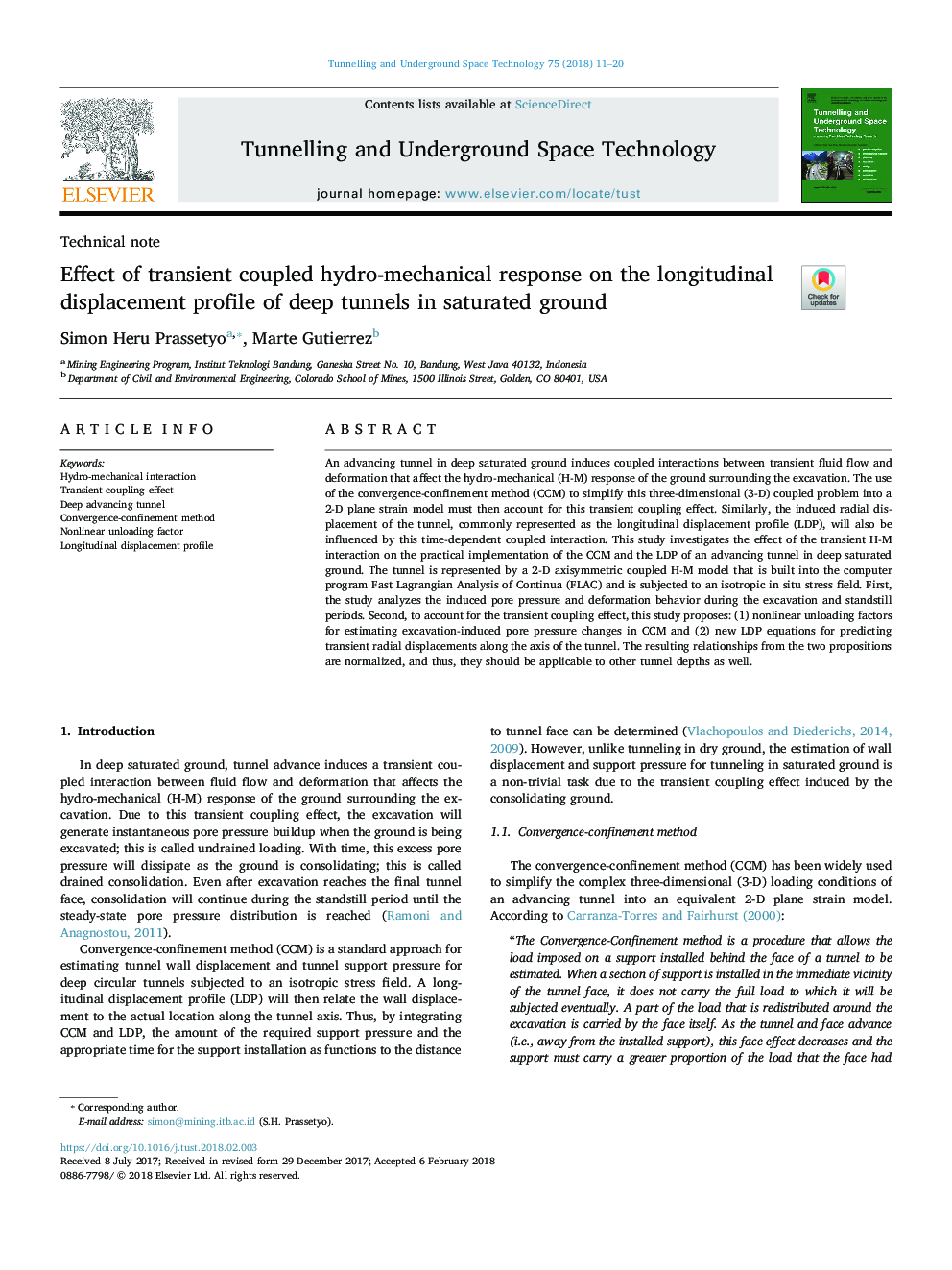| Article ID | Journal | Published Year | Pages | File Type |
|---|---|---|---|---|
| 6782520 | Tunnelling and Underground Space Technology | 2018 | 10 Pages |
Abstract
An advancing tunnel in deep saturated ground induces coupled interactions between transient fluid flow and deformation that affect the hydro-mechanical (H-M) response of the ground surrounding the excavation. The use of the convergence-confinement method (CCM) to simplify this three-dimensional (3-D) coupled problem into a 2-D plane strain model must then account for this transient coupling effect. Similarly, the induced radial displacement of the tunnel, commonly represented as the longitudinal displacement profile (LDP), will also be influenced by this time-dependent coupled interaction. This study investigates the effect of the transient H-M interaction on the practical implementation of the CCM and the LDP of an advancing tunnel in deep saturated ground. The tunnel is represented by a 2-D axisymmetric coupled H-M model that is built into the computer program Fast Lagrangian Analysis of Continua (FLAC) and is subjected to an isotropic in situ stress field. First, the study analyzes the induced pore pressure and deformation behavior during the excavation and standstill periods. Second, to account for the transient coupling effect, this study proposes: (1) nonlinear unloading factors for estimating excavation-induced pore pressure changes in CCM and (2) new LDP equations for predicting transient radial displacements along the axis of the tunnel. The resulting relationships from the two propositions are normalized, and thus, they should be applicable to other tunnel depths as well.
Related Topics
Physical Sciences and Engineering
Earth and Planetary Sciences
Geotechnical Engineering and Engineering Geology
Authors
Simon Heru Prassetyo, Marte Gutierrez,
